








Montana Farmers Union members are doing innovative work on family farms and ranches all across the state and working to build resilient rural communities.
The new quarterly Montana Farmers Union Magazine will highlight the work you and your partners are doing in your communities and provide some inspiration and useful information along the way.
As you thumb through these pages of different issues, you will also find fun features, including a section geared toward youths, recipes featuring Montana grown and produced ingredients, and an expanded Afoot & Afield section.
The quarterly magazine also will provide in-depth information about MFU programs and legislative priorities, and updates on Ambassadors’ work across the state.
In addition to the new Montana Farmers Union Magazine, the long-published Grassroots Newsletter has been revamped. In the spiffed up Grassroots, members will find important dates and deadlines, program information, MFU updates, member classifieds and more each month.
The weekly e-news Boot Up will continue to go out on Monday mornings to keep members abreast of the most current event and program information. Please sign up (if you haven’t already) by emailing communications@montanafarmersunion.com.
The new dual print communications, coupled with the weekly e-news Boot Up, mean MFU can more comprehensively communicate with members.
We look forward to highlighting the ways you are growing your farms, ranches, and communities through these publications!
If you have any updates on what’s going on in your operation (i.e. board appointments, awards received, photos of life on the farm) contact Alice Miller at amiller@montanafarmersunion.com or Communications Director Heather Wendell at hwendell@montanafarmersunion.com.



Greedflation is a relatively new word that was coined due to our latest inflation experience.
Greedflation is defined as profit-led inflation. Corporations have absolutely played a role in profit-led inflation in the last few years. Corporations have taken advantage of issues like the disruption in supply caused by a three-year trade war, COVID and the Ukraine to greedily raise prices, price gouging consumers and producers.
Some people point to the influx of COVID dollars as the cause of inflation, but most economists are now pointing to profit-led inflation as the cause. The majority of the first tranche of COVID dollars in 2020 went to large corporations like the airlines, big oil, retailers, food processors and other multinational corporations. This should have led to a reduction in consumer prices, but in most cases these corporations continued to price gouge consumers.
The USA’s unilateral trade war with our trading partners certainly had an adverse impact on the supply of consumer goods and the COVID pandemic that followed the trade war had an impact on supply recovery, but many economists have argued that these were used more as an excuse for profit taking by corporations.
Farmers and ranchers are struggling with the high price of inputs like fuel and fertilizer, but, again, this is more about corporate price gouging than economic factors. If you look at the price of a barrel of oil versus the price of a gallon of fuel, you quickly see why big oil has been reporting record profits. If you look at historic prices of oil versus gasoline, consumers should be paying at least a dollar less at the pumps today.
When you look at fertilizer prices, you find even more price gouging. Remember at the beginning of COVID, the trading price of a barrel of oil fell below zero and natural gas was trading at 30-year lows. You know the corporate fertilizer giants hedged their gas and oil needs at this point so the cost of their production of fertilizer was as low as it has been in 30 years and yet corporate greed and price gouging drove the price of fertilizer up to five times the average price. Fertilizer was never rationed, as we had plenty to buy; we just had to pay ridiculously high prices.
The American economy is strong. Unemployment is at a record low with job growth breaking records, but this is not the principal cause of our current inflation. It is greedflation, and we should follow Europe’s lead. European leaders are threatening financial sanctions if corporations don’t stop price gouging consumers. Recently French finance minister secured a pledge from 75 major food companies to reduce prices after threatening financial sanctions. British and Spanish governments are putting similar pressures on corporations.
We need to stand up to corporate greed and reign in their price gouging. The next time you hear someone complain about inflation, let them know it is greedflation and point them to the real cause.

PO BOX 2447
300 RIVER DRIVE NORTH GREAT FALLS MT 59403
PHONE: (406) 452-6406
1-800-234-4071
FAX: (406) 727-8216
mfu@montanafarmersunion.com www.montanafarmersunion.com
Board of Directors:
Walter Schweitzer, President
Rollie Schlepp, Vice President, Conrad
Jan Tusick, Secretary/Treasurer, District 6, Ronan
Erik Somerfeld, District 2, Power
Jeff Bangs, At-Large Director District 1& 2, Inverness
Tom Clark, District 1, Fort Benton
MFU is working for family farms, ranches, rural communities, & supports its members through: strong education programs for both youth and adults, advocating member-driven policies & legislation at the state and federal level, & cooperation through producer-owned co-ops. MONTANA FARMERS UNION
Brett Dailey, District 4, Jordan William Downs, District 5, Molt
Ben Peterson, At-Large Director, Judith Gap
Sig Rudie, At-Large Director District 3 & 4, Fairview
Sarah Degn, District 3, Sidney
MFU Staff
Walter Schweitzer, President
Matt Rains, Chief of Staff
Jan Johnson, Office Mgr., Assistant Secretary/ Treasurer
Kari Kester, Administrative Assistant
Rachel Prevost, Government Affairs Director/ Member Svcs.
Matthew Hauk, Education Director
Heather Wendell, Communications Director
Peyton Cole, Event Coordinator
Jasmine Krotkov, Lobbyist
Alice Miller, Press Relations Specialist
Samantha Ferrat, Membership Ambassador
Eleanor Dutton, Membership Ambassador
Carissa McNamara, Membership Ambassador
Mary Jenni, Membership Ambassador
Skylar Williams, Membership Ambassador
Copyright © Montana Farmers Union, 2023
MFU Magazine is the official publication of the Farmers Educational and Cooperative Union of America, Montana Division.
MFU reserves the right to reject any advertisements.
Membership: $50.00 per year
Montana Farmers Union Magazine is published quarterly.
Copy Editor: Alice Miller, Jan Johnson & Heather Wendell
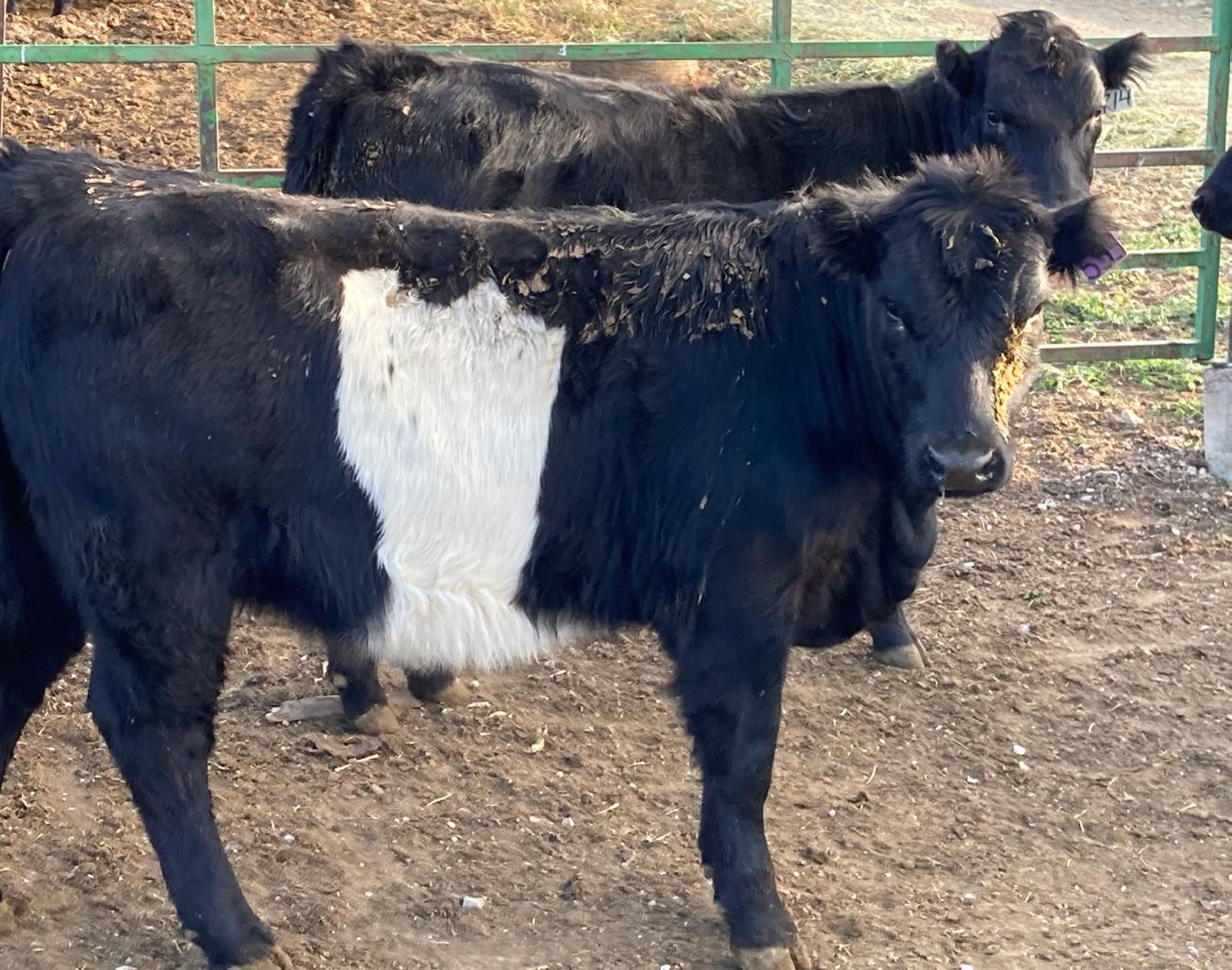
Montana Farmers Union is the oldest & largest family farm organization in the state who represents family farmers & ranchers.



“Watering appropriately can really help to keep pests away”

The most common question I was asked when I worked as a horticultural advisor and gardening professional was: “What should I use to spray on my (name the pest).” Many aspiring gardeners want to be problem-solvers when what they really need to know is how to avoid problems in the first place. Unfortunately, prevention is not something you can sell in a spray bottle.
Where I live in the mountains of Montana, my growing season is about 80 days. (Find how long yours is with the MSU frost free chart: www.montana.edu/extension/mastergardner/linksandresources/ frostfreezedata.html.) The urge to reach for a spray can be strong, especially when, after carefully cultivating and protecting my garden all spring, I wake up one day to see the leaves on my tomatoes curling and puckering under a blanket of aphids. But I’ve been at this a long time and have the strength to resist the urge, at least until I’m sure that I need to spray, and that I’m using a spray that will do the least damage to beneficial insects. I can get solid advice from the MSU Extension Agency if I have questions. (Find your office here: www.montana.edu/extension/localoffices.html.)
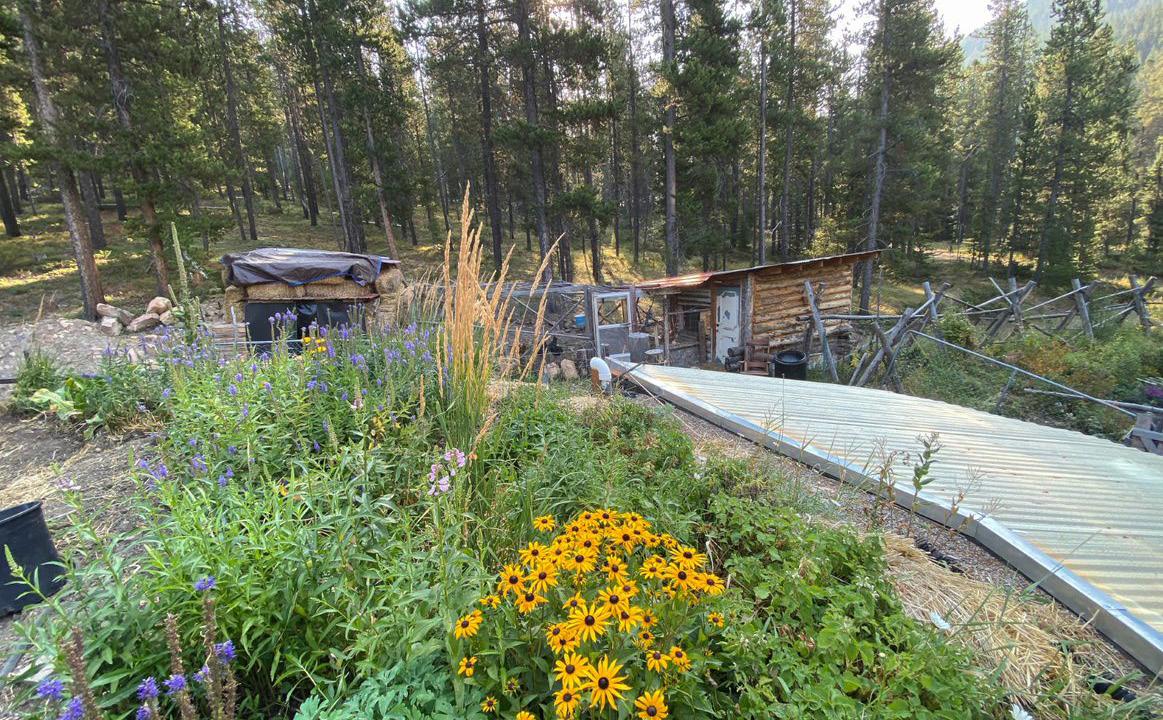
A wide array of organisms occurs in any garden or farm. Only a small portion of these are pests. Many are beneficial; they decompose organic matter, pollinate crops, kill pests, provide shelter or food for natural enemies of pests, or perform other useful functions. Still others are just incidental, having little or no impact on crop production. If you do have a pest species in your garden, a few individuals or light damage is not a problem. If you want the beneficial insects around, you must leave them a snack.
The first step in any pest management program is to spend quality time in the garden, just noticing if there are pests or damage from pests, and if your watering schedule seems to be working.
Watering appropriately can really help to keep pests away, especially blossom-end rot in tomatoes.
Everyone knows that too little or too much water is not a good thing. A good way to check if it’s time to water is to stick your finger in the soil. The top inch or two of soil should be dry, and down below it should be cool and moist. Grab a fistful of soil and form a ball with it. If the soil is dark, feels slick, stains your hand, and forms a ball, don’t water yet. If the soil is crumbly but makes a weak cast if squeezed, it’s time to water.
Water slowly and deeply rather than putting the sprinkler on for a few minutes every day. If you only allow water to seep through to the top few inches of your soil, root growth and overall plant growth will be stunted. Get enough water into the entire rooting zone: from one foot deep for lettuce to seven feet for sweet corn. That means steady, slow watering, starting now – before the deep layers dry out.
And don’t forget to relax and enjoy. In this Instagram era, it seems like everyone else’s garden is perfect, but they aren’t. No one is keeping score of your gardening prowess. If you don’t get a bumper harvest this year, try again next year and buy from a local farmer’s market in the meantime.
Ultimately, my answer to myself and other spraygrabbers is: Do what you can to create a pest management program before you feel like reaching for a spray.



Entrepreneurs, a college student, a recent political science graduate, a teacher-turned-rancher, and business owners might sound like an unlikely team, but that’s exactly who is supporting farmers and ranchers across the state through Montana Farmers Union’s Membership Ambassador Program.
Their love of Montana, agriculture, and rural communities runs deep, with many having extensive backgrounds in agriculture – and a driving desire to preserve it.

“I’ve always just known that [ranching] is what I’m supposed to be doing in a way,” Ambassador Samantha Ferrat said, adding she got a teaching degree in an attempt to put off the inevitable, but now ranches full time with her husband at Ferrat Ranch Limousin in Toston.
“I can’t imagine life without animals and the land. Being a caretaker of these creatures and what God gave is so powerful to me, and I want to be the best I can be so that it is here for future generations and to provide for others. It’s that necessary feeling of needing to give to people and to provide something for them,” Ferrat said.
Being an Ambassador has proven to be a natural extension of her love for agriculture, which includes various leadership roles in other Ag organizations such as Montana Cattlewomen, 4-H and FFA.
“It’s just another avenue to share my passion for agriculture and Montana and what I do,” she said.
“It just all rolls together so nicely. It just works.”
In the coming months, Ferrat said she looks forward to creating ag-focused skills lessons to share as a resource, as well as helping students start a collegiate MFU group at Montana State University.
“That’s exciting to me to have young people in college take an interest in what MFU can do for them and hopefully retain those kids as they go off on their journeys after college,” she said.
Ambassador Eleanor Dutton also is working with college student at Miles Community College to get students involved in MFU and the resources and mentorship opportunities available through MFU.
“I’m really enthusiastic about providing a very unique support system for kids going through school,” said Dutton, a Nebraska native who moved to Helena to attend Carroll College and majored in political science and history.
Now in Forsyth, Dutton said MFU was a good fit with her desire to focus on community support and to work for a non-partisan organization
“I feel like because my husband and I aren’t really in Ag per se, I see the Ambassadorship as more of a community puzzle piece connector,” she said.


Montana Farmers Union Membership Ambassadors are deepening their own grassroots regionally, building and empowering membership and identifying community needs across the state.
“Just having these ambassadors being resources in these areas has been a fantastic opportunity for Montana Farmers Union to tailor programming, education, and more to support members across the state,” MFU Member Services Director Rachel Prevost said.
“I would say each and every Ambassador is ready to help members,” Prevost said. “They’re ready to push family farms forward in the state, and their passion is very evident.”
Listening to members is important to connect people with programs and resources, Ambassador Samantha Ferrat said, adding MFU offers something for everyone.
“I think I’ve really seen a lot of results. We identify something, we try it, and something happens. It’s not just spinning our wheels,” she said, adding the results are motivating.
“I like to make a positive difference for my community and others,” she said.
In the Flathead Valley and Western Montana, Carissa McNamara said she sees momentum building among members.
Not only have members regularly attended meetings, but the Glacier Processing Cooperative has formed to purchase a meat processing plant in Kalispell that otherwise would close, showing the power of cooperatives and grassroots engagement to address challenges.
“That really is membership at work,” McNamara said.
Ambassador Mary Jenni loves people and enjoys learning about what they do, as well as their challenges and successes.
“I feel like everyone has sort of the same mission to make things better in whatever capacity that might be,” she said.
To learn more and connect with an Ambassador, visit www.montanafarmersunion. com/staff.
Continued from pg 11
“You find out very quickly that even though the geography is super isolating, there really is a very dense network of communication between communities, and it’s been really fun to be able to tap into that,” she added.
In addition to her work with MFU, Dutton also works at Victorian Era Country Creations and Gifts and coaches high school speech and drama, connecting with different facets of the community.
An avid cook and baker, Dutton said she also is connecting with food and growing it and storing it, as she incorporates Montana-grown ingredients and learning to garden into her routine.
Regardless of what she is working on, Dutton applies her love of identifying problems – and solutions.
“From trying to increase membership connectivity to how to make logistics work to get groceries, it’s applicable for my day to day. It’s something that I really enjoy, the satisfaction of the identification and then the solution and implementing the solution,” she said.

Like Dutton, Skylar Williams doesn’t have an Ag background, but the issues important to rural communities impact everyone, including him.
Williams was born in Havre and now lives in Billings, where he’s studying Criminal Justice and Sociology at Montana State University Billings.
“For the most part, I run into people who have heard of Farmers Union but don’t know what Farmers Union is,” he said, adding he himself didn’t know either until he campaigned for a state legislature seat at a MFU-sponsored primary debate.
“We’re just an organization of advocates for local family farms and ranches,” he said.
Working with MFU and talking about agriculture, he is realizing how interconnected Ag is.
“It’s great to be able to tap into that network I didn’t know was there before, and just being able to let everyone know that we also have our own helpful vein of information,” Williams said.
“Every time I see a member, it’s, ‘Hi, how can I help you?’” he added.
For Mary Jenni, helping others was the lynchpin for her return to agriculture and an enjoyable part of her role as Ambassador in Central Montana.
Although she grew up in agriculture, Jenni wasn’t interested in having anything to do with it – until COVID-19 changed things.
When the pandemic hit, friends lamented grocery store shortages. Jenni said she asked why they didn’t buy local, to which they replied they didn’t know how.
“I was absolutely shocked, and I said, ‘I can help you do that,’” Jenni said, adding having grown up in agriculture and then working in business and hospitality helped her when she started Montana Lamb and Beef.
Now, Jenni laughs at coming full circle, raising cattle and dating a rancher.
“My exact real life is exactly what I swore I’d never do,” she said, adding she loves to travel to cities for vacation instead.
Food, though, has always been important to her.
“Putting good food on people’s table is what I’m passionate about. And one of my business philosophies is to make sure that it’s affordable,” she added.

Her direct-to-consumer business and other endeavors blend well with the work she does with MFU.
“Sometimes it all mixes up in one big pot,” Jenni said.

Carissa McNamara also finds her role as Ambassador blending with other work she does on her farm and through 4-H. A large part of her work is to engage members and to educate others about agriculture and its impact on their lives, said McNamara, who lives in Western Montana.
Although she and her husband have worked for themselves ranching and in hospitality for almost two decades, she joined MFU as an Ambassador in addition to her roles as a 4-H leader and operator of Wild Horse Lavender, where her family grows a community garden, lemon balm, mint,
hay, mushrooms, microgreens, fruit, registered Dorper sheep, offers u-pick opportunities, creates value added lavender/herb products, and hosts guest stays on the farm. She also is a Montana Agritourism Fellow.
Often, she applies lessons learned during her agritourism and entrepreneurship roles to her Ambassador role, including listening to others and trusting the next generation.
“I really like building things,” she said, adding she’s a serial entrepreneur.
Connecting urban and rural areas and agriculture is critical to everyone’s success, McNamara said, adding she has experienced first-hand what happens when development overshadows retaining agricultural infrastructure and land, with the loss of her ranch in Utah due to development pressures.
“I want people to know how much we need them to advocate for us,” McNamara said. “It can’t just be us in the room. There just aren’t enough of us. There has to be more.”

"Give
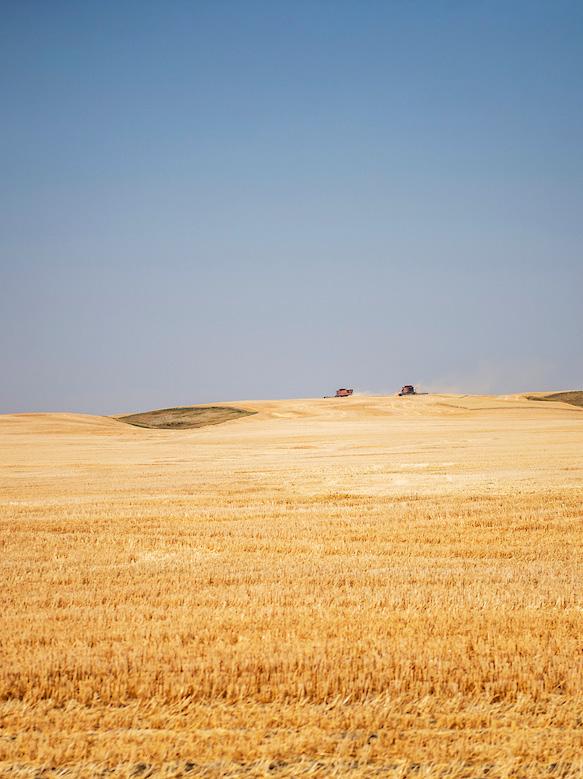

Anaconda
Belgrade
Belt
Billings
Bozeman
Bridger
Broadus
Butte
Chester
Choteau
Circle
Coeur d" Alene
Conrad
Cut Bank
Dillon
Fairfield
Forsyth
Froid
Glasgow
Great Falls
Stefanie Thompson: 563-5991
Craig Parker: 388-6774
Matt Triplett:952-0451
Judd Long: 252-9391
KJ Fauth: 969-2282
Art Hoffart: 586-6230
Dean Derby: 556-0893
Trent Leintz: 551-2163
Wesley Schwend: 662-3930
Jesse Fleming: 436-2115
Mathew Luedtke: 270-5304
Megan Hedges: 759-5150
Scott Allaire: 466-5146
Kaylen Lehner: 485-3303
Flathead Insurance 752-8000
Dirk Elings: 271-7047
Ashley Vanek: 873-2249
Judy Siring: 683-2365
Sara Nye: 683-1250
Matt Luedtke: 467-3444
Donna Manuel-590 0866
Watts Agency: 346-1196
Austin O’Dea :766-2205
Brady Burgess : 228 8282
Eric Hinebauch: 453-8413
Jeff Thill: 452-7283
Aeric Reilly: 570-5853
Kyle Tschetter: 836-7261
Hamilton
Hardin
Havre
Helena
Bryan Jones: 363-6583
Melissa Wacker: 665-1867
Meagan Kinsella:265-2693
Alex Thornton:879-2028
Todd Crum: 443-4630
East Helena
Hingham
Hobson
Kalispell
Laurel
Lewistown
Libby
Livingston
Malta
Miles City
Missoula
Plains
Polson
Ronan
Ryegate
Scobey
Shelby Sidney Sunburst
Terry
Thompson Falls
Whitefish
Wolf Point
Eric Hinebauch: 437-2053
Alissa McClendon: 397-3146
Ray Lipp: 397-3146
Shawn “Tater” Erickson: 366-1287
Andy Manley: 756-7720
Flathead Insurance: 752-8000
Randy Bloom: 257-1252
Lorna Olson: 628-6649
Raleigh Heitzman: 538-8736
Bruce Marshall: 538-2331
Colleen Wood: 293-6228
Daryl Hansen: 222-7151
Shane Anderson: 654-1589
Tayler Kennedy: 874-2560
Watts Agency: 874-1804
Andre Marcure: 543-7184
Ben Barker: 721-2540
Josh Rollins: 830-3073
Pam Jacobsen: 721-0599
Tom Monaghan: 926-2552
Lisa French: 826-4633
Andrew Luedtke: 837-1395
Andrew Luedtke: 676-0173
Audrey Stoican: 568-2336
Matt Stentoft: 487-2629
KW Insurance: 424-8480
Russ Seubert: 434-5211
Cathy Hintz: 488-8326
KW Insurance: 937-6950
Watts Agency: 635-5782
Lisa French 827-3221
Rial Gunlikson: 862-4700
Jesse Fleming: 653-2200



Visits between Montana Farmers Union members often include reminiscing about Farmers Union summer camp experiences. No matter what age members are, they have memories to share – some met their spouses at camp, others know college classmates from camp, others are sending their grandchildren to camp.
Montana Farmers Union has offered summer camp programming at picturesque Arrowpeak Lodge for more than 60 years as part of the organization’s commitment to education. Today’s campers experience many of the same things as campers of yesteryear, with the focus remaining on MFU’s triangle of legislation, cooperation, and education.
Each summer, the staff bring diverse backgrounds and a love of kids and agriculture to the camp, constantly working to make camp as interactive and fun as possible. Hiking, games, and crafts fill campers’ days. While participating in the fun activities, kids also learn about agriculture and cooperatives.
“You want them just to have fun, but you want them to come away with an understanding of cooperatives and farming and ranching,” MFU Education Director Matthew Hauk said. Campers learn about native and invasive plants, farm to table, and especially cooperatives.
“Cooperatives are so important in our history, so we try to keep that top of mind for campers,” Hauk said.
Kids seem eager to learn about agriculture and cooperatives.
“It’s the principle of kids working together to accomplish something and seeing that on a bigger scale they can do larger things,” Hauk said.
With fewer and fewer small farms and ranches, teaching kids about agriculture is critical.
“Agriculture is something that we do expose them to in the hopes that that carries over so they know they have a future in agriculture,” Hauk said.
While at camp, kids are surrounded by 250 acres in the Highwood Mountains.
Arrowpeak’s centerpiece is a log cabin lodge, with a recently updated commercial kitchen and dining room that can easily accommodate 150 people for dinner. It also has pool tables, ping pong tables and a
large fireplace with plenty of comfortable chairs in which to relax. The nearby recreation hall also has seating for more than 150 people with a stage and dance floor.
Several buildings accommodate campers. The Governor’s ranch house has 30 beds with multiple bathrooms, common area, fireplace, and a wraparound deck. There are 10 small cabins, each with a queen bed, full bathroom, and deck. The handicraft building has three large bedrooms with queen beds, two full bathrooms and a large common area with some extra beds for guests. The barn bunkhouse will undergo renovations soon to add two full bathrooms.
Three new cabins, each able to sleep 12 and including a full bathroom, are being used for the first time this summer. “We’re seeing there’s a wait list for the camps. With the new cabins, we’re able to get out there and help reach our mission of teaching more kids about agriculture,” Hauk said.
The new cabins are an upgrade for boy campers over the previous boys dorm.
“Having something new is making a better camp experience for them,” Hauk said.
Another new feature campers are taking full advantage of is nine-hole mini golf course.
“I didn’t know kids love mini golf like that,” Hauk said, laughing.

Montana Farmers Union youth camps offer an affordable, fun, and educational experience in the Highwood Mountains. Members only pay $100 per camper for a five-night stay that includes food, education, co-op games, and more.
MFU allows other youth organizations like FFA and 4-H to utilize Arrowpeak camp facilities at discounted rates. Arrowpeak Lodge and camp are also available to rent for events like weddings or reunions, with MFU members of five or more years receiving discounts up to 40% off.
Campers also have access to a basketball court, volleyball court, horseshoes, gaga ball, frisbee golf, hiking, and more activities.
Perhaps the most engaging new feature at Arrowpeak this summer is a 12-by-16-foot greenhouse used for lessons about plant science, as well as to supplement camper meals with fresh produce. Already, vegetables like tomatoes and lettuce are on campers’ plates, with plans to further integrate the greenhouse into the camp experience in the coming years.
“You can talk all you want about agriculture and how plants grow, but, when you get the handson portion of it, I think it just really helps it to sink in, especially for kids who don’t come from farms and ranches,” Hauk said.
While former campers can laugh while reminiscing over camp songs and traditions that hold strong still, it’s the engagement, including in the greenhouse, that makes for lifelong lessons.
“All in all, the blend of old and new camp traditions makes for unforgettable experiences campers will talk about for years to come,” Hauk said.

Learn more about opportunities at Arrowpeak by visiting www.montanafarmersunion.com.
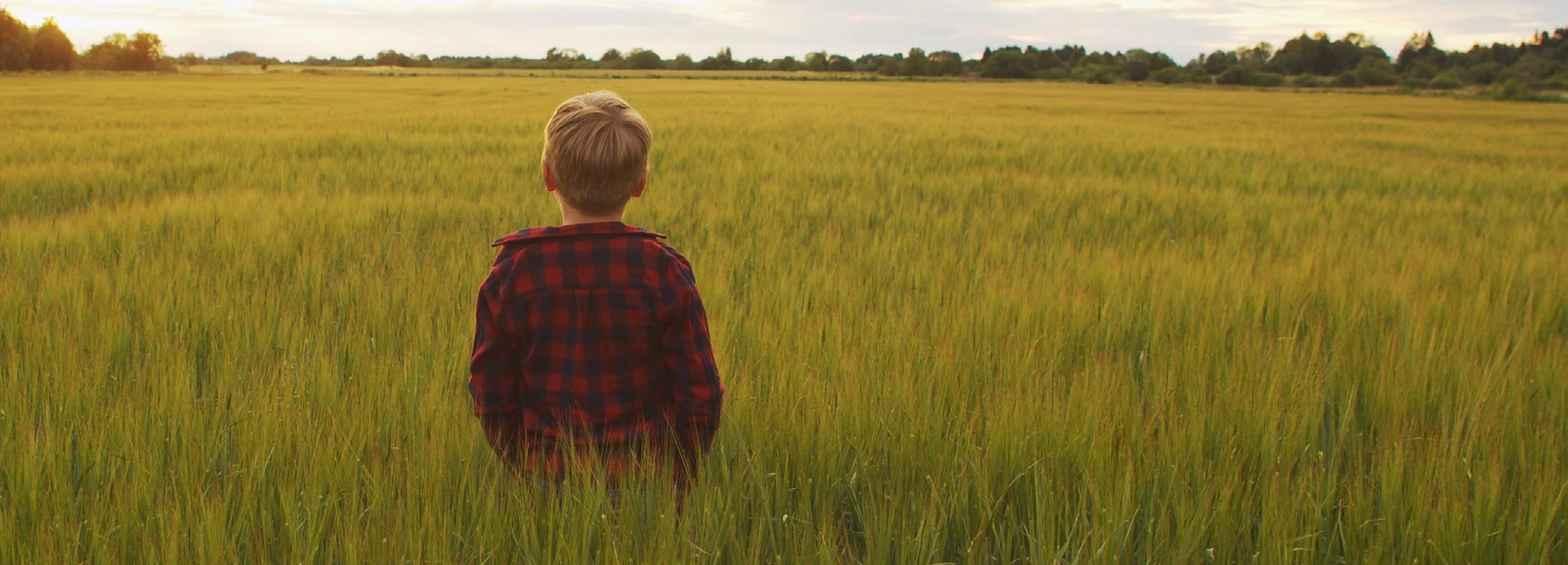
Rural communities around the state are realizing potential with more than $60,000 in grant funding over the past two years from Montana Farmers Union Foundation.
“It’s about rural communities and family farms, and what can Montana Farmers Union do to help,” said Jan Tusick, an MFU board member.
“This is where we can fill a void and some really good work in small communities,” Tusick added.
This marks the second year the MFU Foundation has awarded grants to projects that align with the Foundation’s mission to create new opportunities and contribute to the growth and enhancement of Montana agriculture and rural communities. Projects must include an educational component for youth and/or adults, with priority given to rural communities.
Last year, the Foundation awarded and leveraged more than $30,000 for six community projects. This year, the Foundation received more than 30 applications and awarded and leveraged nearly $43,000 for 11 projects.
“It is a very simple process – and it should be, especially in light of the focus,” Tusick said. Jessica Myers, who teaches Family and Consumer Sciences at North Star High School in Rudyard, applied for a grant in 2022 to help fund a modular style, all-season greenhouse that will be production this coming winter.
“I applied for the MFU grant knowing that many other grants require additional funding sources. The MFU grant did not have that requirement and therefore, it made it easy to apply,” Myers said.
“Without the initial funding provided by MFU, we would have faced significant limitations in applying for various grants that ultimately supported this project. Thanks to these collective efforts, we have been able to enhance our capabilities and make significant progress towards our greenhouse goals,”
Myers added.
Havre Public Schools Education Foundation received $5,000 from the Foundation, as well as $2,500 from Montana Farmers Union for a greenhouse project to expand ag classes at Havre High School and programming for FFA.
"We are excited to partner with Havre Public Schools on this project and see how this greenhouse blossoms now and into the future to benefit the students at Havre Public Schools. The Havre Public Schools Education Foundation is grateful to the Montana Farmer's Union Foundation for their $5,000 grant and the Montana Farmer's Union for their generous $2,500 donation so from Day One of the 2023-24 school year, Havre High School Ag Education teacher and FFA Advisor Saralyn Standley can utilize this greenhouse as a living educational learning opportunity for the students at Havre High School," said Kyle Leeds, the education foundation’s chairman.
In many ways, the projects receiving Foundation and MFU funding exemplify MFU’s emphasis on grassroots engagement.
“Every project we funded was built from the grassroots in those communities. And that’s just reflective of what small communities do: They work together to solve their problems, and they look for partners to help them solve those problems,” Tusick said, adding MFU is one of those partners.
“The Foundation’s grant program is a great program,” Tusick added. “I think that and what Farmers Union has committed as a board [in funding] is just a great step forward not only as a resource for communities to do these projects, but for Farmers Union to reach a lot of people.”


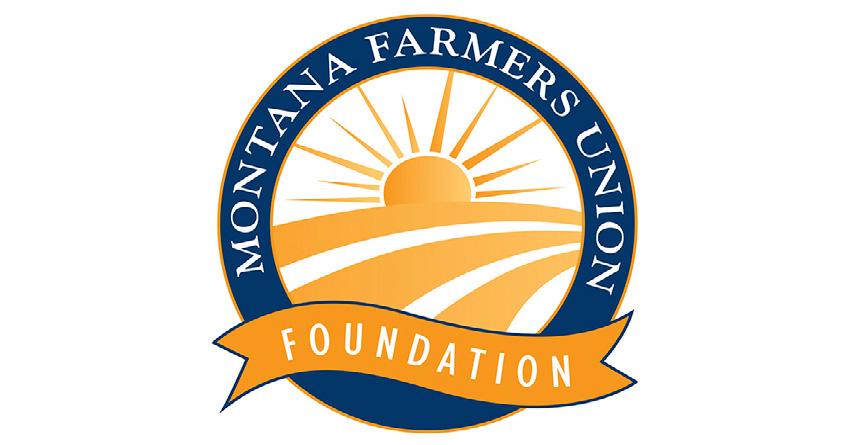
•$2,500 to Utterback School in Conrad for a free standing, self-water hydroponics unit to grow fruits, herbs and lettuces.
•$2,500 to Anthony Pavkovich for “Women of the Dirt,” a short-form documentary that will humanize Montana’s meat industry by showing the risks, opportunities and rewards the state’s beef producers experience within the current system of agriculture.
•$1,000 to Belt High School for the purchase of animal science 4-D anatomy models for livestock and companion animals and veterinary supplies to practice using proper veterinary techniques.
•$7,500 to Havre Public Schools Education Foundation to add a greenhouse to enhance education for both the classroom learning as well as their FFA program. MFU and the MFU Foundation combined to fund this award.
•$1,000 to Mission West Community Development Partners’ Mission Mountain Area Pedal to Plate farm-to-farm bike tour culminating in a locally sourced farm-to-table dinner, locally brewed beer, live music, and a farmers market.
•$2,500 to Hamilton School District #3 F2S to revitalize the Daly Elementary school garden in Hamilton.
•$2,500 to Land to Hand Montana/Columbia Falls School District to support after school garden club programming.
•$2,500 to Helena Flats School Garden to renovate a school, with the goal of incorporating land to hand learning for all students and making the garden an accessible place for all students to learn.
•$2,500 to Anderson School in Bozeman to provide materials for the school farm to table program by creating new garden spaces for grades k-8.

•$2,500 to Happy Ranch Wife Productions to purchase 750 books to take to schools for readings and then to give to children.
•$4,500 to Vista Ridge Foundation to finish construction of a passive solar year-round greenhouse that will increase availability of locally grown produce in traditionally underserved areas.
•$10,000 from Montana Farmers Union to the Western Agricultural Research Center’s buildings upgrade project. *Award Funded by MFU
The Montana Farmers Union Foundation will again accept grant applications beginning March 1, 2024. To learn more, go to montanafarmersunion.com/mfu-foundation/.

As a grassroots organization, community is the core of Montana Farmers Union. For more than 100 years, MFU has supported the people growing and producing food by bringing you together around a table that provides both sustenance and resources.
At the MFU table, we celebrate agriculture while talking about policy, how to teach others about ag, using cooperation to solve challenges, and, yes, the weather. We also share how we’re tackling the challenges in our fields and homes, building solidarity with others who love the rural lifestyle.
Here you will find recipes celebrating producers across the state and the ingredients and products their hard work provides.
In this edition, MFU Membership Ambassadors share some of their favorite recipes, including baked pork chops that Samantha Ferrat requested every year for her birthday dinner growing up, lamb tacos made with Mary Jenni’s own lamb through her directto-consumer business, and poor man’s cake that has been eaten since Carissa McNamara’s family made do with what they had during homesteading years. Come, share a good meal and draw inspiration from each other while you connect with the tools you need to build resilient communities.


We set a place for you. You’re always welcome here at the Montana Farmers Union table.
Submitted by
Samantha Ferrat MFU Ambassador4 bone-in pork chops, farm raised
1 can Cream of Mushroom soup
8 oz milk, locally sourced
1 medium onion, from your garden, diced
½ lb fresh mushrooms, sliced
3 tbsp olive oil
8 oz French dressing
½ tsp sugar
1/8 tsp black pepper
1 tbsp minced garlic
½ tsp salt
4 medium to large potatoes, from you garden, cut into bit size pieces
Sauté the mushrooms and onion in olive oil. Remove from pan. In same pan, sear the pork chops on both sides. Place seared pork chops in 9x13 baking dish. Add the raw potatoes on top of the pork chops, then the sautéed mushrooms and onions. In a bowl, whisk to combine the soup, milk, French dressing, sugar, garlic, salt and pepper; then pour mixture over the chops and potatoes in the baking dish. Cover dish with foil and bake at 375 F for 1 hour or until potatoes are done to your liking.
Submitted by Carissa McNamara
MFU Ambassador
1 ½ lbs raisins
4 C water
2 C sugar
1 C shortening
4 tbsp cocoa, heaping
1 tsp salt
2 tsp cinnamon
½ tsp cloves
2 tsp nutmeg
1 ½ tsp vanilla
Bring all the ingredients to a boil in a large pan, then turn to low and simmer with lid for 20 minutes. Let cool to lukewarm. Mix together 2 heaping teaspoons of baking soda in ½ cup of warm water. Pour the water and baking soda mixture into the boiled mixture. Add 1 ½ teaspoons of vanilla and 1 cup chopped nuts (if desired). Mix in enough flour to make a thick mixture. Bake in greased loaf pan at 225 F for two hours. Test with toothpick. Let stand in pan for 30 minutes, then invert on rack to cool. Enjoy with a slice of cheddar cheese or a dab of whipped cream.
Submitted by Mary Jenni MFU Ambassador
4 C of Montana Garden Variety Rhubarb
1 C raspberries
2 C sugar
2 C water
3 C mini marshmallows
2 C whipped cream
Combine 4 cups of diced rhubarb, water and sugar into a pan and cook on medium to low heat until the rhubarb is soft. Add raspberries. Cook a few minutes more. Add marshmallows and stir until dissolved. Place in refrigerator for a few hours until cold. Fold whipped cream into the rhubarb mixture. Place in freezer to harden (at least 2 hours). Note: Add pink edible glitter to the sugar to make it sparkly.
Share your favorite recipes (and memories around them) that feature Montana grown and produced ingredients by emailing communications@montanafarmersunion.com.
Submitted by
Mary Jenni MFU Ambassador5 lb leg of lamb (bone in)
2 tbsp cumin
¾ C sherry vinegar
10 cloves garlic
½ tsp red pepper flakes
1 cinnamon stick
1/3 C brown sugar
1 tbsp chili powder
1 16 oz can tomatoes (crushed or sauce)
12 oz of beer (Montana craft dark or light but no IPA)

Put all the above in a crock pot (use a liner to make cleanup easier). Cook on low for 6-8 hours or high 4-6 hours. When done, remove bones and shred meat. Put shredded meat back into sauce and stir.
To assemble the taco:
On a warm soft corn tortilla, spread about 1 tbsp of apricot jam/preserves, top with shredded lamb, sprinkle on cotija cheese, red onion and cilantro.

Submitted by Alice Miller MFU Press Relations Specialist
1 ¼ C lentil puree*
1 ½ C granulated sugar
1 C oil
4 large eggs
1 tsp vanilla extract
2 C sifted flour
4 tbsp cocoa powder
1 ½ tsp baking soda
½ tsp salt
1-2 C your favorite icing
2 bags chocolate candy melts
Lollipop sticks
Sprinkles, cookie crumbs, or diced nuts for decoration

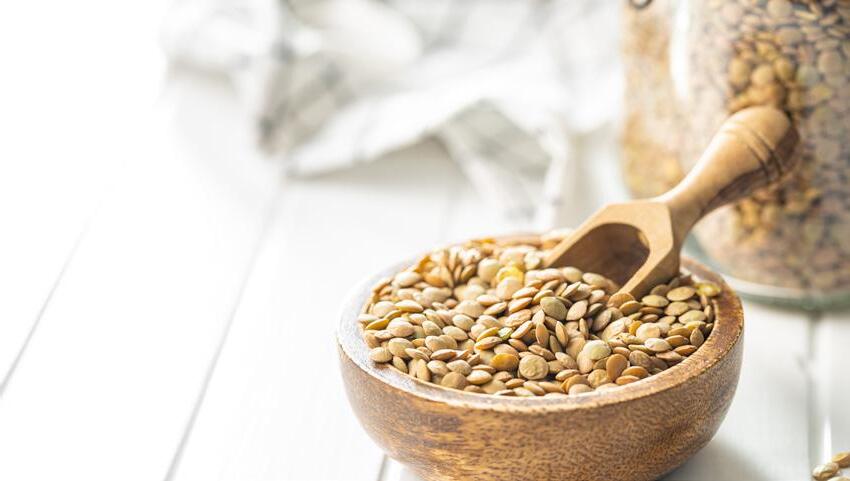
*To make lentil puree: Bring ¾ C of lentils to a boil in 2 C water. Cover and simmer for 7-9 minutes. Drain, reserving the liquid. Add ¼ C of lentil liquid back in to lentils. Puree in a blender or food processor. Yields about 1 ¾ C, extra can be frozen.
Preheat oven to 350 degrees. Grease and flour two 8” round cake pans.
Beat the sugar, oil, and eggs together for 2 minutes. Add lentil puree and vanilla. Mix for 1 minute.
Sift the dry ingredients, add to the batter, and beat for 2 minutes on high speed.
Pour into prepared cake pans and bake for 30-35 minutes. Remove from oven and turn onto cooling racks. Cool completely.
Once cool, crumble cake in large bowl. Mix in frosting, a little at a time, until well-combined.
Form mixture into cake balls, about 1 ½ inches in diameter.
Melt chocolate candy melts according to package instructions. Dip the tip of each lollipop stick into the candy melts and insert into cake balls.
Freeze for 15-20 minutes and then dip cake balls into the remaining candy melts. Dip in sprinkles while candy coating is still wet.

“It’s an abundant world and there’s enough for everybody. The Ag system is a golden-star example of that.”
Transformation is always happening at Purple Frog Gardens. Lettuce makes way for tomatoes in a hoop house. The arugula grows past its harvestable stage and instead provides edible flowers. Flowers are dried and remade into paper or replanted to restart the cycle of life.
Because change and creativity are embraced at the farm, transformation is the norm, making “The Pause Year” Purple Frog’s owners are taking seem like a natural next step instead of a radical move.
“It was easy because the alternative was to stop, and that would have been heartbreaking for me,” said Pam Gerwe, who operates Purple Frog Gardens in Whitefish with her husband, Mike Jopek.
“I’m comfortable with the unknown and just trust,” Gerwe said, adding her ability to pivot has proven useful. From the very beginning, Purple Frog Gardens has been more about community and less about farming itself.
“My thing is community, and then food is just my medium,” said Gerwe, who is originally from the Washington, D.C., area. People’s need for food is universal and brings them together. Plus, growing it allows her to work outside and with integrity, which are non-negotiable to Gerwe.
During the building process at Purple Frog, Gerwe’s ability to see potential in everything and creative spirit served her well as she thought about what was next. When the farm started, it was just a field and some rhubarb from their neighbor, Gladys Border, who was willing to share her knowledge and some plant stock.

“She was so kind and patient, and surely she thought we were so ridiculous,” Gerwe said, laughing. For the past three decades, Gerwe and Jopek have built Purple Frog Gardens into its current form, beginning with people “adopting” chickens, growing into selling wholesale, at farmers markets, and through a CSA, and slowing back to a CSA and one wholesale account.
“We just nudge, nudge – like Sisyphus, pushing the rock, pushing the rock, pushing the rock,” Gerwe said.
Through it all, others have helped build and grow, from Farm to School VISTAs to community members, friends, and Care Farm clients.
The farm has provided several lessons, including it can frost any month, the world is abundant, and you can’t just take from the soil but must put something back.
“It’s an abundant world and there’s enough for everybody. The Ag system is a golden-star example of that,” Gerwe said.
Plant a seed, tend to it, and receive a return like none other that is enough to share, she added, using rhubarb as an example.
“We started with our rhubarb plant from Gladys, and now we have a lot, and because we have so much, it’s easy to share,” she said.

“Think globally, eat locally,” is another mindset that Gerwe said she holds to, creating opportunities on the farm for people to connect with each other and their food and the land that grows it.
For instance, when Purple Frog supplied hops to the Great Northern Brewery, the brewery staff would come and help harvest the hops.
“We’ve done community things all along,” Gerwe said, adding that on Fridays, CSA members pick up their boxes of goods and stay for some pizza and conversation.
Volunteer days, work with community
partners and schools, and youth day camps have filled the farm with people throughout the years.
Gerwe has invested in the community as well, serving on boards, including AERO, Land to Hand Montana, and the North Valley Food Bank.
Just as people have transformed the farm, the farm has transformed people during critical times, with people returning to Purple Frog as a touchpoint for peace and solace. After 9-11, people just showed up at the farm.
“Because they didn’t know what else to do, and so we weeded,” Gerwe said.
Then, during the COVID-19 pandemic, CSA members received their subscription boxes in a drivethru. They started writing something they were grateful for on pieces of paper that now form a chain hanging in loops from the rafters of a community pavilion where CSA members congregate to enjoy pizza when they pick up their weekly boxes. Visitors and CSA members still add links.
Now, during “The Pause,” it’s just Gerwe and Jopek filling weekly CSA boxes, re-evaluating, and creating space to figure out what’s next.
Why Purple Frog Gardens?
Gerwe said she loves the color purple, frogs are a natural part of gardening “and I was young once.” Now, that she’s older, she’d choose something with Frost Hollow in it, referring to the farm’s micro-climates.

The combination of getting older and watching their moms get older is plenty reason for reflection.
“Our parents are just right there, and we can see, and we want to spend more time with them because we can see,” Gerwe said.
Even in “The Pause,” Gerwe is geared for community, pondering ways for community partners to make use of the farm’s infrastructure. Ever dreaming, she’s not ready to make any hard-and-fast decisions, though.
“If your lap is always full, there’s no room for what’s next to fall in,” Gerwe said. Whatever decisions will be guided by her belief that the world is abundant and working with integrity.
“There are way better farmers than us,” Gerwe said. “The farm is the way to get to everything else that is so juicy in how we want to live our lives.”
Learn more about Purple Frog Gardens on Facebook at https://www.facebook.com/ purplefroggardens, and on Instagram as purplefroggardens.
“Year after year we’re seeing a troubling trend of farmers earning less and less of the dollars that Americans spend at the grocery store,” said NFU President Rob Larew. “Whether it’s the highly consolidated meatpacking industry, or harmful mergers in the grocery sector, farmers and consumers are being squeezed out of their hard-earned money.”
Last year, the United States Department of Agriculture (USDA) announced that the farmer’s share of the food dollar had reached a historic low at just 14.5 cents of every dollar spent.
“It doesn’t have to be this way. Through our Fairness for Farmers campaign, we’re fighting for a 2023 Farm Bill that creates fairer and more competitive markets that benefit farmers and consumers,” Larew said.




Cattle grazing results in large quantities of dung deposited on pastures and rangelands. Rapid incorporation of this material below ground is needed to maintain and improve soil nutrient cycling and water holding capacity. Dung beetles offer a method of rapid pat breakdown that can provide millions of dollars in benefits to Montana agriculture through improved soils, increased AUMs, and pest fly management. In short, these hard-working beetles will do the dirty farm work for free but little is known about them in Montana.
Roughly 90 percent of what a cow eats is passed through and deposited on pastures as either urine or dung. Urine, as a liquid, is immediately incorporated into the soils. Dung, however, can remain for years as pats on the range. Pat smother happens when dung is not rapidly broken down and reduces ranch AUMs. For example, a 500-cow herd can remove 90 acres of pasture from production in a 150-day grazing period. If we assume 1 acre per AUM at $26.50 per AUM, that is a loss of $2,685 per year, which can persist for three to four years.
Dung is also rich in potassium, phosphorus, and nitrogen which forage plants need for optimal growth, yield, and nutritive quality. The same 500-animal herd will deposit over $5,000 per year of these nutrients on pastures; however, if left unincorporated into the soil, these nutrients are not plant available and can be permanently lost.
Finally, dung also contains a large amount of organic matter that is excreted as undigested plant fibers. It is estimated a 1-percent increase in soil organic matter will increase the water holding capacity of soils by 20,000 gallons per acre. Improving soil water holding capacity should be a major ranch goal since the main nutrient plants need is water.
Dung beetles are unique critters that are classified into three main groups: rollers, tunnellers, and dwellers. Rollers and tunnellers move dung below the soil surface into pre-dug brood chambers where females deposit fertilized eggs on the dung ball, which serves as a resource for offspring development. More specifically, rollers carve off a dung ball and roll it some distance away from the dung pat to bury while tunnellers bury dung directly below the pat. Dwellers, on the other hand, live and reproduce within the dung pat and consume up to 500 percent of their own body weight. A hundred beetles working on a dung pat can really increase the rate of breakdown and soil incorporation, reduce pat smother, and improve forage production.
Questions that Montana livestock producers are asking focus on the economics of dung and dung beetles and specifically how and if the use of parasiticides are impacting the bottom line of forage production and ranches profit. Right now, we don’t have any clear answers to those question here in Montana. To address this, the MSU Forage Extension and Research program has begun projects that will answer many of the questions we’re getting about dung beetles and the role they play in forage production on grazed lands.


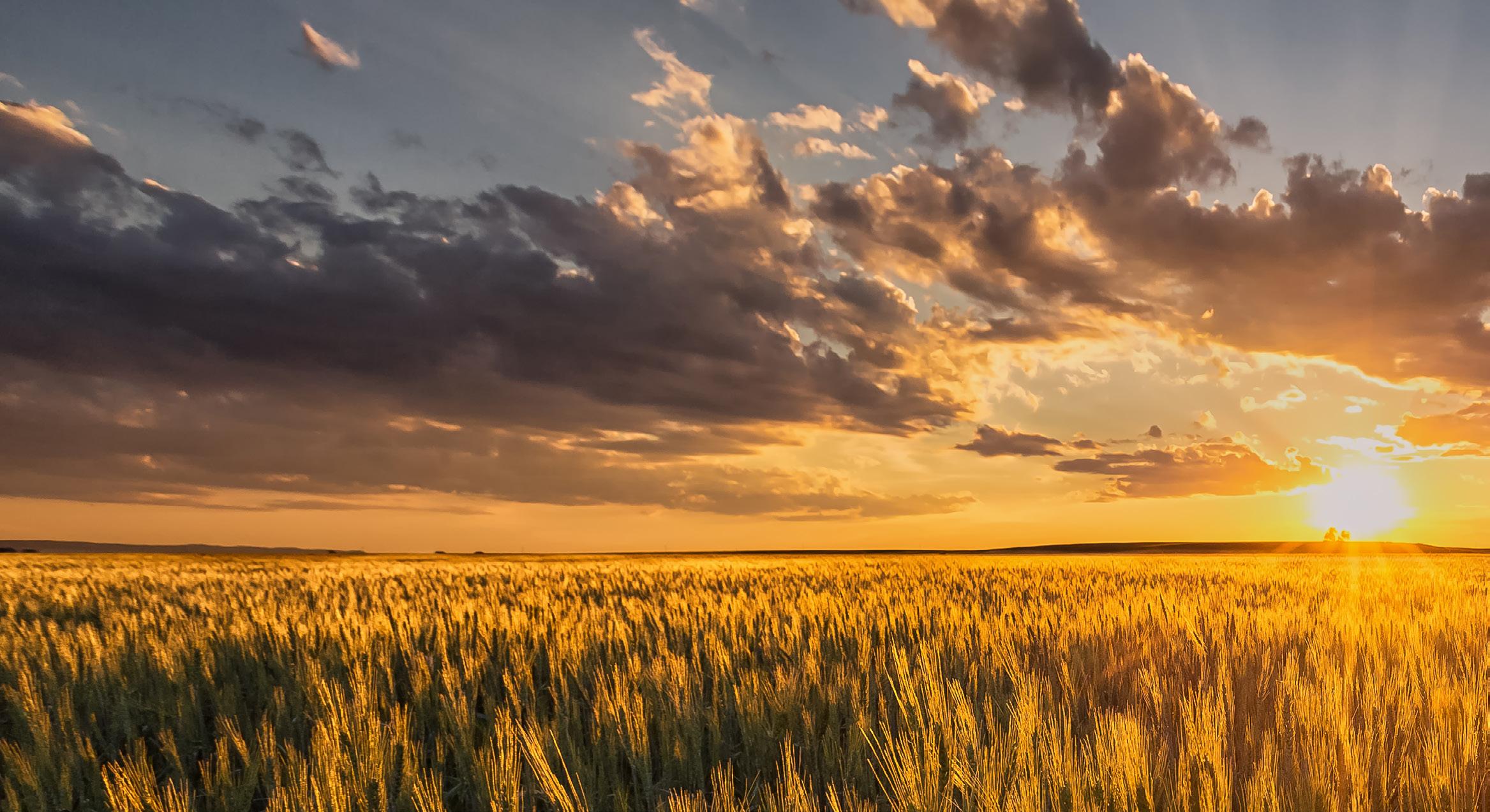
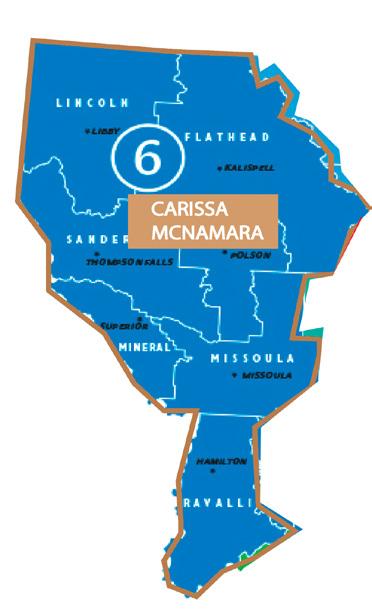
It’s been an exciting year and choosing what to write about was difficult. Our Ladies Who Ag Luncheons and the formation of the Glacier Processing Cooperative deserve their own columns, but it was reading the “Farmers Lawyer,” and hearing author Sarah Vogel, speak at the MFU book club that still reverberates.
What Sarah did, during a desperate time of need for small family farms, is heroic work. She knew her clients were in the “right,” but being “right” and “winning,” aren't synonymous. Still, she welcomed the fight.
“I still think about the farms that didn’t get saved,” she said.
This humble statement, after this single mother sacrificed and lost everything during the course of the battle, made the lump in my throat grow so large that I was choked up for the entire evening.
There were 22 MFU members on the call, and it was astonishing how many farms were lost during
this era in our group alone.
“How do we educate folks that food is critical infrastructure?” I asked, not able to hold back tears. Her silence was poignant, and the emotion that filled the space chokes me up ... still.
“Double down,” she said.
As soon as her words landed, everything simplified. I testified during the Montana Legislature in person once this year – which can easily be doubled. I wrote three letters of testimony – easily doubled. We attended two candidate town halls – easily doubled.
I shared Sarah's words with my husband and son, and we all committed to "double down," both in our agricultural and ag-vocacy efforts. We put in an additional 75’x60' community garden, next to our newly expanded 100’x75' garden, which is harvested in the fall by youth groups, while we teach the Farmer’s Share.
We asked our son, "What is possible when we “double down?”
He said, "Anything is possible, momma."
Ambassador Carissa McNamara - Flathead

I have seen and heard many different opinions and perspectives from all ages of people while working in Forsyth. Of the most common threads that I have picked up on is people in this area are thoroughly invested in their communities.
While that might seem a bit general, in this area people are already filled to the brim with their day-to-day obligations and responsibilities. The planning, emotional investment, and interest it takes to participate in a community seems like it would make a person reach their tipping point very quickly. And yet, I am continually amazed at how people can find the energy and time to do so.
The challenge that I have before me as a MFU Membership Ambassador is to discover different ways to help channel that energy and interest into new solutions that contribute to rural communities. The sense of tradition and respecting “the way it has always been done” is strong and can be a wonderful way to direct and ground community values and goals. One of the ways I have navigated this is in my work with the Miles Community College Ag program. Connecting college students

with real producers, business people, and community members creates the opportunity to instill in our future community leaders the values and wisdom that have propelled and sustained rural communities in Southeast Montana. Another example is the MFU Ladies Who Ag program: It creates the unique opportunity for the women in agriculture (from all knowledge and experience backgrounds) to network and support each other. Assisting the women in rural communities to fill knowledge gaps, strengthen relationships, and identify common goals leads to direct channeling of energy and resources. I have also been able to teach public speaking workshops at 4-H clubs and in the school room. Fostering effective and empathetic communication among our youth ensures that they will have the tools to contribute to their communities throughout their lives.
MFU supports farmers, ranchers, and rural communities. This past year I have directed my energy toward the rural communities in the Southeast. Without a community, our farmers and ranchers would be without support systems, resources, and infrastructure. I will continue to build on this focus point, with the hope that I too can be a part of the solutions that address the challenges rural communities must navigate.

The timely rains across Montana sure are a welcome change in our weather pattern! The rain is a blessing, and I am so thankful for these drought-breaking rains. The grass is very green and growing – the makings of fat, sassy, and happy cattle! Amongst the wet weather we have managed to brand and wean our fall born calves, harrow and fertilize our hay fields, flood irrigate our fields much faster than the previous three years, and haul our momma cows to summer pasture. Somewhere in between all this our son, Andrew, graduated from MSU-Bozeman, accepted an ag-ed teaching position, and became our summer intern!
In my role as an ambassador, lately I have been deep diving into one of the three founding pillars – education. As a former teacher, focusing on this pillar comes naturally, and I truly enjoy education in many forms and for all ages. Whether I’m the one educating or the person learning from others, it all helps our efforts in advocating for agriculture and family farms and ranches. Rancher round tables and producer meetings have been popular this spring and early summer, with topics ranging from regenerative grazing, agritourism, livestock disaster preparedness, antibiotics requiring prescriptions, effective communication, meat production and safety, leadership through agriculture, conflict management, to changing the antibiotic mindset and ruminant gut health. There are so many opportunities for continuing education, for all ages in agriculture. I encourage all of you to take advantage of these programs and gatherings to learn and engage with others. If there’s a topic you want to know more about, or you want to share your knowledge with other MFU members, please reach out. As your ambassador I welcome new opportunities and ideas to present and educate our members.
Another educational opportunity that started this spring and continues through summer, is the Ladies Who Ag Luncheons happening across all our ambassador regions. This programming is a place where women in agriculture gather to experience relevant educational topics, meet new acquaintances, and strengthen relationships. Ladies Who Ag is a space, a mindset, and place to deepen our knowledge about agriculture and issues surrounding the world of agriculture. Ladies Who Ag provides women the opportunity to connect with each other at a deeper level. We are neighbors in rural communities, but are we connected? Connecting with our neighbors, fellow farmers, and ranchers is the foundation of growing stronger rural communities.
Here’s to a great summer, a happy haying season, and I hope to see you soon at an MFU event! Ambassador Samantha Ferrat - Gallatin
Heya, members! The amount of moisture this year is pretty awesome. I think Montana is just trying to make up for the previous years of arid summers.
I’d like to start out with Arrowpeak Camp and what’s been going on up there. I got to experience it in early June, and boy oh boy, was it something. If you still have energy after the activities, the hike at the end will solve that issue for you! Being able to meet our local 4-H and FFA youth, I’ve always let them know about the camp, but now I can speak from experience and answer more personal questions about what they can expect.
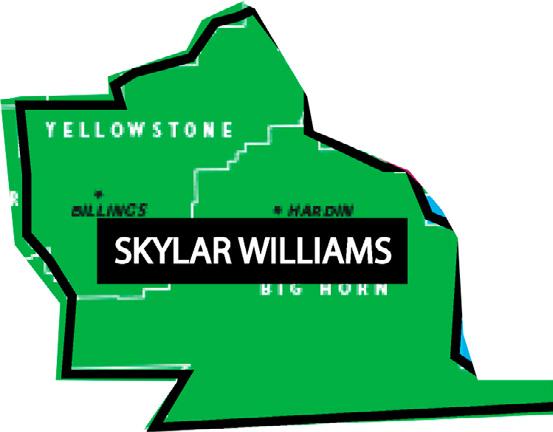
MSU Extension had a field day at the Southern AG Research Center in Huntley. I had personally never been to one of these before, but I heard they share what they’ve been researching. Most of it was about different herbicides and the proper timing
to apply them to which type of crop for higher yields and less weed infestation. Most of the questions from the group were near the end as we visited the wheat fields. They also showed that they’ve been testing a new line of wheat. Brandi Johnson of MSU Bozeman gave the presentation and had some of the agriculture students talk about genome sequencing, light radiation and that Bobcat wheat has the top 5% yield in the state. I handed some helpful information regarding wheat, barley, loans and grants available for those present at the end, as well that I’m sure they could get some use out of.
All in all, the past few months were full of fun times and the coming months are full of a lot of new stuff to look forward to, especially with farmers markets and county fairs on the way. I’m looking forward to running into current and future members of Montana Farmers Union!
Ambassador Skylar Williams - Yellowstone Bighorn
June is my favorite month in Montana. The reasons I love June so much are that it hosts Summer Solstice, fields of wildflowers, pastures of baby animals, and, this year at least, plenty of rain. This June, I also had the wonderful opportunity to see so many amazing ladies at the five Ladies Who Ag Luncheons in my Central Montana Region.
“Rural women need to work together to create change.” This statement was made by Sarah Vogel, author of “The Farmer’s Lawyer,” during the Montana Farmers Union Book Club Zoom meeting held in May. Such a simple sentence, yet impactful, this quote has been my motto for the Ladies Who Ag Luncheons.

Spring is in the air and plants have been the common topics of most conversations, no matter the group. And I am talking about plants of all kinds from noxious weeds, crops, pastures, flowers, garden vegetables, and trees. Let me share with you some tips I have learned in my conversations:
•Weed identification is challenging for a lot of folks. The Montana Weed Control Association has an online Weed ID page (mtweed.org). They also have hard copy Weed ID charts. An app called Seek by iNaturalist uses your phone’s camera and does not need Wi-Fi to work.
•Everyone enjoys beautiful flowers, and they are necessary. I participated in a lecture by Patti Armbrister in Malta, and she said that 10 to 15% of a garden should be planted with flowers because it keeps the soil heathier. The second time I heard Patti speak was during the MFU Lunch and Learn Webinar on June 14 where Patti Armbrister talked about resilient gardens. A second tip on flowers is to use Sunflowers for shade relief and wind block (great tip for those in Judith Gap area).

•Lastly, I want to talk about trees. There are 94 Montana State University Extension Agents serving all 56 counties in Montana. These agents have expertise and knowledge on trees, yards, and gardens, and are extremely helpful. An agent told me the time to order shelter belt trees with them is in the fall, which I did not know. A wonderful place to get information will be your local agent, who you can find at www. montana.edu.
Farmers markets, fairs, 4-H barns, and rodeo dates sprinkle my summer calendar. I look forward to seeing many MFU members in the coming weeks. When you see me, be ready for my question, “What Can MFU Do for You?”
Ambassador Mary Jenni - Central MT
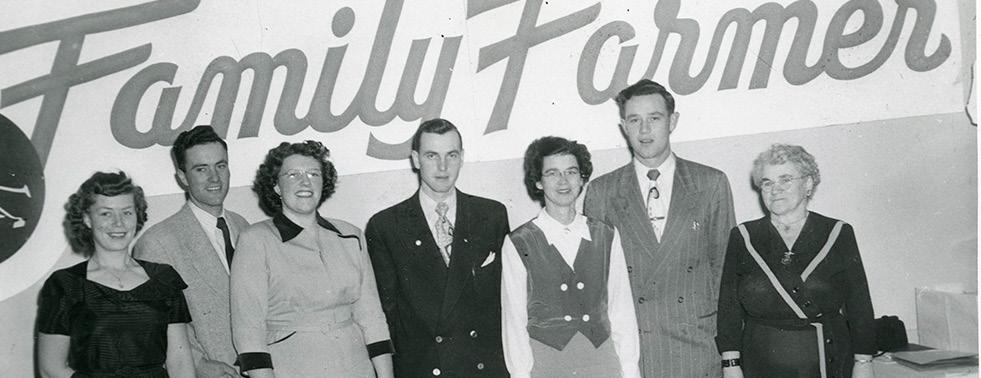

While MFU has morphed several times since its formation in 1916, the grassroots organization continues to build a more resilient future for Montana’s farmers and ranchers by focusing on education, legislation, and cooperation.
“The Farmers Union family is made up of funloving, hardworking, compassionate people who will support your farm and your community,” MFU President Walter Schweitzer said.
His grandparents’ generation’s willpower to start MFU in a period when meeting times were shared with neighbors via horseback is inspiring, said Schweitzer, who is a generational member.
“The foresight that our grandparents had to develop an organization like Montana Farmers Union and National Farmers Union to educate and advocate for the family farm, to develop legislation and the cooperatives that support the family farms, it’s just mind blowing,” he said.
National Farmers Union was founded in Texas by 10 family farmers in 1902 as the Farmers Educational Cooperative Union of America. Not long after, interest grew in forming a Montana Farmers Union, and in 1912 Locals began popping up around the state in an effort to find a united voice against corporate monopolies and their anticompetitive practices.
Delegates from 37 locals representing nine counties gathered in Great Falls for the first annual convention as a formally recognized state Farmers
Union in 1916.
Some current members have generations of family involvement in MFU.
There hasn’t been a time in Trudi Peterson’s life when she hasn’t been involved in MFU, beginning as a child participating in camps and educational programming, working for MFU in several roles, and remaining a member.
The family’s involvement began when Peterson’s grandmother first learned of Farmers Union and its cooperative efforts to help farmers get better prices for their products.
MFU’s value to her today is a voice in the state Legislature and Congress when you can’t personally be there, a cooperative way of doing business, networking opportunities, information from a trustworthy source, and educational opportunities, Peterson said.
“My grandmother put the value that Farmers Union has for us in education, legislation and information down in to her children, and their children, and put it down into at least my generation. So I think that’s what we have to offer to young people,” said Peterson, who now ranches outside of Judith Gap and whose son serves on MFU’s board.
Today, MFU remains the largest and oldest farm organization in Montana that represents the family farm. The MFU pillars of education, cooperation and legislation, continue to guide its efforts.
Farmers Union junior camps began in the 1930s and have been held since, investing in Montana youth by developing their leadership skills and agricultural knowledge with day camps and lowcost summer camps.
MFU also offers leadership programs, various leadership roles for youths at camps and during MFU events, as well as including youth representatives during NFU’s annual convention and providing avenues for youth members and 4-H and FFA members to tap into resources and mentorship opportunities. Scholarships also are awarded annually to members.
Peterson said that many of the opportunities provided through MFU helped sculpt her into an engaged adult with an informed voice.
“I think the idea that you can be involved in your community has been instilled in Farmers Union, and I think that’s been helpful,” she said.
Programming also is available for adults to learn about best practices, pending legislation and more. For example, the recently held Lunch & Learn interactive webinar series broached topics ranging from resilient gardens to soil health to financial stimulus programs.
Cooperatives like MPPC have played a role in Montana Farmers Union since the beginning, with farmers joining together to create cooperative grain elevators, livestock shipping companies, utility companies, and cooperatives selling groceries, fuel and more.
One cooperative formed was what is known today as Farmers Union Mutual Insurance Agency. In the 1990s Farmers Union Mutual Insurance Agency spun off from MFU and is now a stand-alone company with its own board and management team. MFU and FUMICO have a close working relationship and recently announced a five-percent discount on auto policies for MFU members. MFU also is involved in Farmers Union Enterprises, with began with cooperative roots more than 70 years ago when Montana, North Dakota,
South Dakota, Minnesota, and Wisconsin pooled resources to start a livestock marketing co-op that eventually became Farmers Union Marketing and Processing Association. Over the years FUE acquired other value-added and manufacturing businesses. In 2005 FUMPA and FUE reorganized, combining the businesses under the management of Farmers Union Industries. The FUI board is appointed by FUE. Profits from FUI after patronage disbursements flow to FUE. Each year FUE allocates dividends to each of the five member states, as well as allocates some profits to NFU, allowing the member states and NFU to fund much of the activities that the farm organizations provide. MFU continues to support cooperatives, including facilitating the creation of Montana Premium Processing Cooperative.
The new USDA certified meat processing plant in Havre is run by its cooperative members and can slaughter up to 15 animals a day, providing ranchers with a reliable and consistent slaughter facility and customers with a steady supply of Montana born and raised meat. MPPC also is working with MSUNorthern to address the lack of labor in the meat processing industry by offering collegiate meat sciences training and business courses.
“MFU will continue to develop co-ops like the recent Montana Premium Processing Cooperative that benefit family famers and local communities. MFU will continue to advocate for Fairness for Farmers and challenge the anticompetitive practices of the corporations,” Schweitzer said.
As a grassroots organization, MFU – and ultimately National Farmers Union – look to its members to identify and address challenges and support efforts to strengthen family farms and ranches.
NFU’s very formation was in response to the dire issues such as anticompetitive practices that farmers and ranchers faced in the late nineteenth and early twentieth centuries.
Local members work on issues in their communities, bringing those issues to the state level, with the state organization amplifying those issues at both the state and national level.
Membership Ambassadors help Locals regionally across the state tap into MFU resources and bring policy suggestions to the state level as well.
Each year, MFU members gather for the annual convention (planned October 27-28 at the Heritage Inn in Great Falls this year). During the state convention, members elect board members and delegates to the national convention. Members also debate policy and then vote on alterations and priorities for the coming year. The finalized policy is used as a roadmap for staff as they work to put member-approved policy into action, lobbying on behalf of and against state and federal legislation. Members also can lobby using MFU policy by commenting during the Montana Legislative Session, contacting state and federal leaders, and by participating as delegates to NFU’s annual convention or during NFU’s annual Washington, D.C., Fly-In or the MFU Drive-In during the state legislative session.
MFU offers leadership development programs to help members engage in legislation and promoting MFU policy.
One avenue for leadership development is the Farmers Union Enterprises Leadership Program, which consists of a cohort of Famers Union members from Montana, Wisconsin, North Dakota, South Dakota and Minnesota. Participants learn about cooperatives and advocating, then have the opportunity to participate in NFU’s Fly-In event to speak to members of Congress on behalf of farmers and ranchers.
Another way members can engage is by participating in one of several committees that help plan events, look at forming new programs, and review policy.
“It’s important for members to participate on a committee because that’s the grassroots of our membership in action. Members guide
the programming at our events, the policy review process, and let us know what about important issues in their communities so MFU can better serve our rural areas and members with timely and important programming. Plus, there is awesome comradery and meeting and discussing with MFU members from all over the state,” MFU Member Services Director Rachel Prevost said.
Whether through educating people about the Farm Bill, forming cooperatives to meet community needs, providing information from industry experts, sponsoring community events and programs, or advocating for legislation to strengthen family farms, Montana Farmers Union continues to provide solidarity for Montanans committed to the success of family farms and ranches and rural communities.
“The people I’ve worked with in Farmers Union and I became acquainted with, they’re innovative, they’re willing to try things, they’re creative, and they want to be engaged. They want to make things better for not only their farm but for all people in the state of Montana. And that’s really refreshing,” Peterson said.





Over the past year, thousands of documents and photos that had previously been stashed in storage units and boxes in the office were scanned and preserved, providing a clearer picture of Montana Farmers Union’s heritage.
“Montana Farmers Union has a really interesting history, and I think that it’s something that we all can learn from. Also I think it’s important that we honor the generation that got us going,” MFU President Walter Schweitzer said.
Items range from photos of members at events and summer camps to newspaper articles about monopolies and anticompetitive practices to a letter from President John F. Kennedy after he visited Great Falls. Every day, MFU loses institutional knowledge about what MFU has been and provided in the past as older members pass away. The longrange plan is to create an interactive website where members can peruse the scanned items and share their memories and help identify people and places.
“I want to capture some of their memories and stories before we lose that opportunity to,” Schweitzer said.
 By Jasmine Krotkov Lobbyist
Montana Farmers Union
By Jasmine Krotkov Lobbyist
Montana Farmers Union
There has been a lot of talk about the Farm Bill, and there will be much more as Congressional members work to revamp the piece of legislation set to expire in September. So what is the Farm Bill, and why is the Farm Bill so important for farmers and ranchers?
What is the Farm Bill?
The Farm Bill is a package of legislation enacted every five years that shapes the American agricultural economy. It influences farming livelihoods, what crops are grown, how those crops are insured, beginning farmer training, and food access for low-income families, along with many, many other programs.
Every five years the Farm Bill expires and is updated. Each farm bill has a unique title, and the current one, adopted in 2018, is called the Agriculture Improvement Act. It expires this year. In response to the economic and environmental crises of the Great Depression and Dust Bowl, the original farm bills were about keeping food prices fair for farmers and consumers, ensuring an adequate food supply, and conservation of natural resources.
What work is currently being done, and what is the process for what comes next?
There are many steps to enacting each new Farm Bill. First the House and Senate Ag committees draft versions of the bill they want to see, then each chamber debates, amends and votes on the bill in its respective committee. Next, a conference committee is formed to combine the two bills, and then the full chambers vote on the combined final bill.

Once the Farm Bill is signed into law, money must be appropriated to fund its programs. Though the Farm Bill expires and is re-authorized every five years, the appropriations process takes place every year as follows: The Farm Bill authorizes spending the money; the appropriations committees make decisions about spending ceilings for each authorization.
In years when the final appropriations resolution is not agreed upon by the House, Senate and Administration, the government shuts down.
At the same time as the appropriations process, the USDA is responsible for writing the actual rules for how the programs will be implemented.
During this long process there are lots of public hearings, in which testimony from experts and agencies is heard.
The farm economy is cyclical, and commodity price and input cost volatility are among the chief reasons that family farmers and ranchers are forced out of business. Farm bills should be written with tough times in mind so that programs serve as a safety net. Furthermore, farm bills work best when they are forward-looking, and lawmakers should ensure the next Farm Bill anticipates future needs.
The Farm Bill’s chapters are called titles, and those titles can change over time. Currently there are 12 titles:
1. Commodities
2. Conservation
3. Trade
4. Nutrition
5. Credit
6. Rural Development
7. Research, Extension and Related Matters
8. Forestry
9. Energy
10. Horticulture
11. Crop Insurance
12. Miscellaneous
MFU supports establishing a dedicated competition title in the next farm bill, which should include Fairness for Farmers priorities. Some of our priorities that could be addressed in the competition title are: ensure strong enforcement of the Packers and Stockyards Act, reinstate mandatory Country of Origin Labeling for beef and pork, protect growers from meatpacker retaliation, ensure that checkoff programs are producer controlled and regularly reviewed, and support the expansion of diverse, local and regional market opportunities in farm and food supply chains.
While the process of passing a new Farm Bill is long, complicated, and often confusing, it is easy to advocate for our priorities. Talk to your neighbors about what you know and contact our congressional members to tell them that you are concerned about these priorities. Make sure you sign up for action notifications from Montana Farmers Union and National Farmers Union. And watch this space for more information about what is happening with the Farm Bill.

I was raised, along with wheat and cattle, on a farm on Montana’s northern border. In my early years, trips to town in the summer seemed a rare treat. So, imagine the anticipation of making the 80-mile trip to get to the county fair where the sights, sounds, and smells, along with the foods and flavors, all blended together like the whirl of pink cotton candy on a cone.
The fair provided an opportunity to see my mom enthusiastically enjoy the Tilt-O-Whirl. I was nine years old when Mom, my older sister, and I had one of the most memorable rides ever. Mom, who was 8-months pregnant at the time, would throw her weight into the spin as she timed the command, “Lean, girls!” As we shifted direction, we were set spinning and giggling with glee!
The teamwork on that ride was only one of the ways the fair brought our family and our community together. All year we attended 4-H club and project meetings where we learned skills that built confidence that prepared us for the ride of life.

As a club, we took our turn to work the 4-H food booth at the fair, each of us having a job, and moving up the ranks with age and skill, from clearing tables to running the cash register or making what seemed like 100 milkshakes per shift.
The fair also meant planning a club exhibit. One display was on home safety, and our leader taught us lessons in proper storage of medications, household chemicals, and first aid. We also had multiple personal entries. Over the years mine included cooking, sewing, photography, gardening, poetry, floral arranging, beef breeding and market beef.
Something I truly appreciate from all the preparation for the fair is that it taught me to plan. Using the foods project as an example, we had to choose recipes, make sure we had groceries since we lived so far from a store, and plan around Mom using the kitchen for harvest meals. We also had to plan around the flurry of fabric
being converted into fashion and the cattle being calmed for show. The planning and prioritizing skills that I learned preparing for the fair, like other 4-H lessons, carried through my life.
I became a volunteer project leader at 19, later becoming an Extension Agent tasked with planning the county fair. Eventually I had a view as a parent with two daughters who joined a local 4-H club to learn lessons of leadership, teamwork, and community connections. My oldest daughter, her first year in 4-H, enthusiastically enrolled in five 4-H projects and registered to take 60 exhibits to the fair. She, too, started to learn the lessons of planning and time/energy management.

As a parent, I came to appreciate that the fair imposed a deadline for me to ensure that my children learned the skills I wanted them to have for their lives.
Some of those skills learned from the fair include career training taught through interview judging, during which the 4-H member rotates to judges with different expertise and collaboratively evaluates their learning experience and exhibit. From Cloverbuds at age five to 4-H members through age 18, youth learn to introduce themselves, present both project and process, identify improvements they would make, and celebrate their success.
The successes found at the county fair are individual and collective. For the 4-H member it might be an individual success of being able to show a robotics, photography, or livestock entry. The collective societal win is youth who are becoming confident and skilled, who can work in clubs and teams, who can interact with multiple generations, and who can look for ways to contribute – whether it is clearing tables at the food booth or welding panels for the hog barn.
Last year, I stood ringside and reflected on my 24 consecutive years attending the same county fair. I smiled at families, four-generations deep, seated together and supporting each other. I watched as people came together from multiple communities across the county to enjoy each other and work together for a common purpose – to support youth learning the skills we all need them to have on this ride of life.
The Business Booster Program is an opportunity for businesses to support family farmers, ranchers, and rural communities. With your support we can ensure that the voices of family farmers, ranchers, and rural communities are heard. If you have previously been a member of our Business Booster Program, we thank you for your support and hope you rejoin.
Being a member of the MFU Business Booster Program provides business owners and full-time employees with select MFU membership benefits (our full member benefit page is also included in this publication). Additionally, business boosters receive promotion of your business through MFU’s platforms and newsletter publication, and MFU also asks members to support Business Booster members’ businesses throughout the year.
As a Business Booster, you receive:
• Your business logo linking to your website will be featured on our website: montanafarmersunion.com.
• MFU Business Booster program window cling stickers for your business.
• Opt-in for a brief promotional site visit from MFU Staff to create a social media feature to post on our platforms (check the box below if you would like us to reach out and schedule a visit).
• Recognition in our quarterly magazine of your business information and logo. The magazine is mailed to all our members (includes FFA chapters and advisors, other Montana businesses and organizations, libraries, etc.).
• Recognition at our annual membership convention for your support of MFU, family farms, and ranches.
• All full-time employees at your business will receive a one-year Montana Farmers Union affiliate membership to access retail and travel discounts. (Please note: Affiliate members are non-voting members at the MFU annual state convention. Affiliate members who are agricultural producers can sign up for an individual membership at montanafarmersunion.com.)
• MFU discounts on car rentals, hotel stays, travel benefits around the state and nationwide, and other retail discounts are available to you. Check out the full list of retail benefits on the benefits page.
If you are interested in joining the program, please fill out the Business Booster Contract on the back of this page and mail it back to us with a list of your full-time employees’ full names. We will then follow-up with next steps to get your media site visit scheduled (if you opt-in) and get your list of your full-time employees signed up for their affiliate membership. You can find all this information online, plus a sign up form to join the MFU Business Booster Program with credit card payment. Please do not hesitate to reach out with any questions about our organization or the Business Booster Program. Thank you for your support of family farmers, ranchers, and rural communities.
Name of Business:
Web Page Address:
Email:
Owner/Manager:
Address:
City: State: Zip:
Phone Number:
Signature:
Date:
$100 Paid ( ) or Please bill me! ( ) | Check here to sign up for a site-visit & social media promotion! ( )
Please remit payment to: Montana Farmers Union, PO Box 2447, Great Falls, MT 59403
Need more information please call Toll Free: 1-800-234-4071
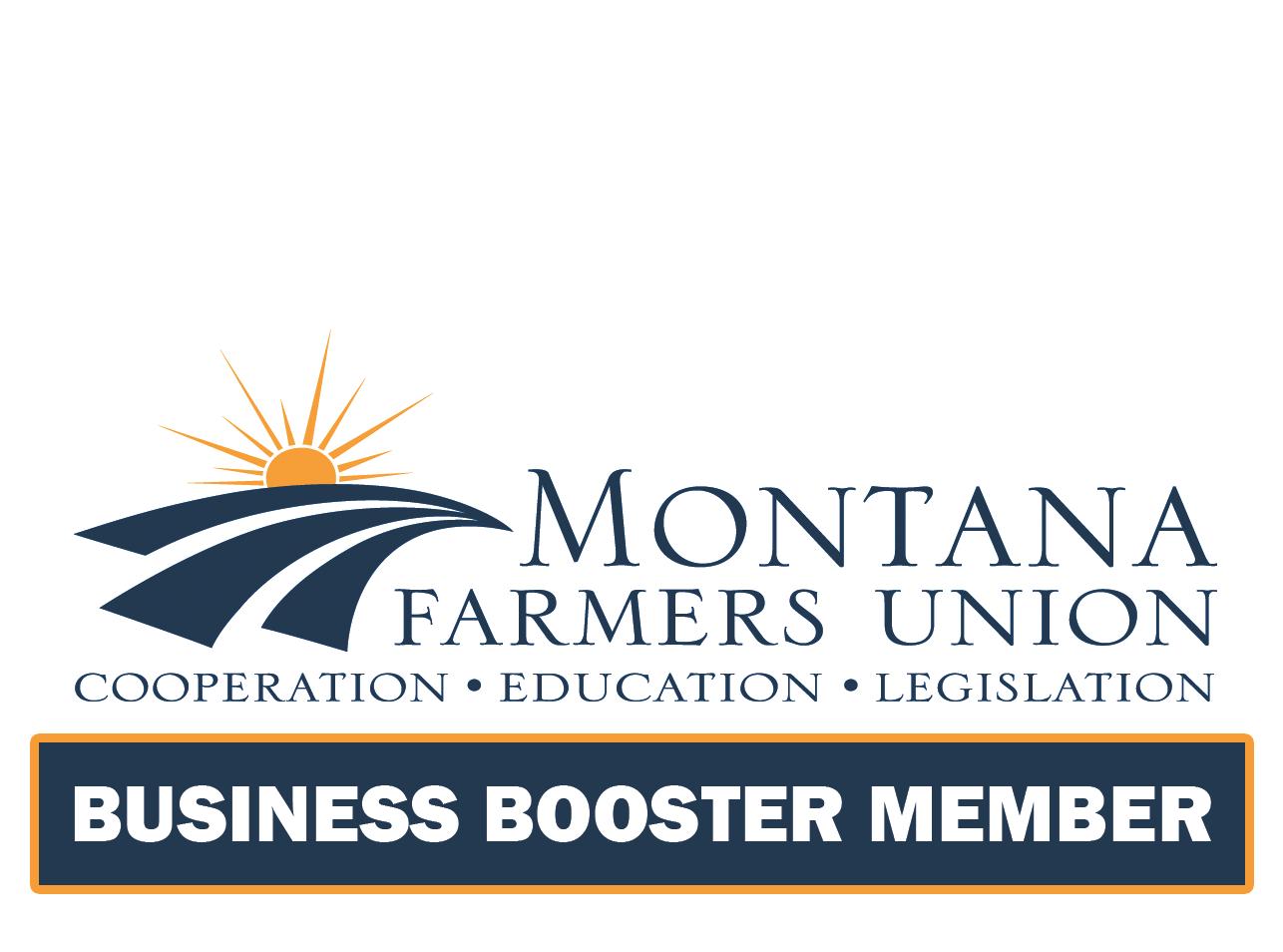




As a third generation Montana farmer who’s lived and worked in rural America my whole life, I know firsthand just how badly folks in Montana need improved access to high-speed, affordable internet.
Whether it’s checking markets or looking for parts, we rely on the internet to conduct business and stay connected – and that’s why this June we delivered. For nearly a year I worked with four other Democrats and five Republicans to negotiate my Bipartisan Infrastructure Law – and we’re already starting to see results.
This is the most significant investment in our nation’s infrastructure since the Eisenhower days, and it’s going to make Montana a powerhouse for ag producers and families.
It’s helping fix our outdated roads and bridges so that you can get your products to market; it’s investing in our water systems through finishing projects like the St. Mary’s Diversion Dam on the Milk River to give producers certainty; and it’s going to connect every household and business to high speed internet so that every Montana family has the opportunity to make a good living for generations to come.
High-speed internet access is a game changer, and in June we got big news for Montana.
Last month we secured major investments from my Bipartisan Infrastructure Law that will expand internet coverage to every home and business in the state.
This funding comes from the National Telecommunications and Information Administration’s (NTIA) Broadband Equity, Access, and Deployment (BEAD) program to build high speed internet infrastructure that is anticipated to cover more than 100,000 unserved locations across Montana – and it wouldn’t have happened without my bipartisan law.
Now the state will submit a plan to the NTIA that ensures areas without access to high quality internet
Jon Tester, U.S. Senatorwill get connected, and within the coming years we should see ground broken on projects across the state.
The first step in developing these plans is identifying our coverage gaps – or in other words – who has good internet, and who doesn’t.
I’ve been pushing the Federal Communications Commission (FCC) on this issue for years, but with the passage of my Bipartisan Infrastructure Law and some serious pressure on the FCC – we finally pushed them to deliver.
Early in June the FCC released revised maps that give Montanans increasingly accurate information on their own high-speed internet coverage, and allow folks to report inaccurate information help to improve the maps. You can access these maps at https:// broadbandmap.fcc.gov, and I encourage you to give your feedback so that we invest in the right areas.
These maps are an incredible tool that will help folks in rural America see what options are available, and more importantly, it will help internet service providers create efficient plans to expand service to every corner of the state – which is critical as we want to stretch every last dollar from my Bipartisan Infrastructure Law.
And speaking of stretching dollars, this June we also secured resources from the American Rescue Plan
 Steve Daines, U.S. Senator
Steve Daines, U.S. Senator
to connect 61,000 Montanans to high speed internet, and additional investments from my Bipartisan Infrastructure Law that will bring high speed internet to:
• 3,300 People in Phillips, Roosevelt, Sheridan, Valley, Lincoln, and Flathead Counties.
• And the Missoula, Bitterroot, and Big Hole Valleys, benefiting 6 counties and 42 communities by laying broadband fiber and completing the “Sapphire Ring Project” around the Sapphire Mountains.
This targeted funding will connect producers in some of our most rural communities to the online resources they need, and folks should see fiber being laid in the coming years.
Montana’s seen investments in internet in the past, but we’ve never seen anything like this.
Because of your support I was able to get to work in the United States Senate and pass this law – and now everyone in the Treasure State will benefit.
I passed this law to strengthen rural Montana, and couldn’t have gotten it across the finish line without the support of MFU and its members.
Thank you for advice and input, and I’m looking forward to seeing Montana’s producers thrive as we improve our state’s infrastructure from top to bottom.

As ideas and proposals continue to roll in regarding the 2023 farm bill, I am pleased to be receiving hearty feedback from countless Montana ag producers who work to improve their livelihood day
in and day out. Back in Washington, D.C., federal government bureaucrats maintain a heavy hand of regulatory power, so I will keep working to reduce government overreach and put the power back into the hands of hardworking Montana farmers and ranchers.
The U.S. Senate Committee on Agriculture, Nutrition and Forestry continues to hold hearings ahead of the formal introduction of the 2023 farm bill, with the most recent discussions surrounding rural broadband and specialty crop producers. Here in Montana, we have more cows than people with one of the greatest land masses in
the country, so we are all too familiar with remote and underserved areas when it comes to Internet availability. Whether it’s access to broadband, transparency in the cattle markets or folks’ ability to operate on their own private, bought and paidfor land – common sense should be the mainstay of these conversations.
As a member of the U.S. Senate Committee on Energy and Natural Resources, I keep a close eye on proposed rulings that could burden or penalize hardworking Montanans. On April 3, 2023, the Bureau of Land Management (BLM) proposed a public lands rule entitled, “Conservation and Landscape Health,” that fundamentally alters the agency’s management of public lands under the “Federal Land Management Policy Act.” I am concerned this rule would adversely impact Montanans by threatening multiple uses such as ranching, mining, logging and outdoor recreation, which are all essential to our shared Montana way of life. Grazing on federal lands provides billions of dollars each year in ecosystem services, wildlife habitat, recreational opportunities, clean air, clean water and more that can’t be quantified. I will continue to press Department of the Interior Secretary Deb Haaland and BLM Director Tracy Stone-Manning on this issue to ensure they realize the value that multiple land uses provide.
When it comes to the Biden administration’s burdensome Waters of the United States (WOTUS) rule, I applaud the recent Supreme Court ruling that rightfully put landowners back in charge of their private property. Government overreach needs to be reined in, not expanded, so I was proud to help lead the fight to revoke the new WOTUS rule. I have since heard the sense of relief from folks in every corner of the state now that the Supreme Court has righted this injustice. Thankfully, Montanans will no longer have to question whether or not they can operate on their private land because of a dried up ditch or pond that out-oftouch bureaucrats tried to wrongfully leverage power over.
I appreciate your tireless work and innovation throughout rural Montana, which transcends far beyond the Treasure State lines, as we know that Montana agriculture provides nourishment for people across the U.S. and around the world. Not long after President Abraham Lincoln first established the United States Department of Agriculture in 1862, he referred to it as “The People’s Department,” and this still rings true today. Agriculture is a critical industry for the United States of America, as it provides fuel for the men and women who work to make our country the greatest in the world.



In addition to the extensive travel and retail discounts that it provides, a Montana Farmers Union membership ensures the voices of family farmers, ranchers and in rural communities are heard in all the places where important decisions are being made.
Your membership with Montana Farmers Union opens the door to almost endless possibilities for agricultural education, advocacy skills, and gathering to build community so that you feel confident becoming more engaged in your community.
The need for leaders and the next generation of producers to step up and be active in our communities is clear and more pressing than ever before. A recent publication prepared for Montana by rural sociologist Benjamin Winchester of the University of Minnesota Extension reported that one in every 13 adults must hold a leadership position to keep the state’s existing government and nonprofit organizations running.
In other words, the need is dire for us all to become active members of our rural communities – or our rural communities may cease to exist as we know them.
As a member, you gain varied opportunities to learn and build on leadership skills from public speaking to the policy making process to how to testify and tell your story to your legislator, all so you can advocate for family farmers and ranchers, and rural communities. For example, you could apply to be a participant on behalf of Montana in the Farmers Union Enterprise Leadership (FUEL) program, where you learn how to run a meeting and parliamentary procedure and get real-time lobbying experience at the D.C. Fly-in with other Farmers Union Members.
Another opportunity is the Beginning Farmer Institute, a free, year-long training program put on by National Farmers Union for producers across the country, intended to improve the health of your farm or ranch business. Topics of focus include business formation, taxation, accounting, land, labor, credit, and business planning.
In Montana, we host a Legislative Drive-in during the state legislature. At this drive-in, we teach effective lobbying and storytelling techniques, connect you to your locally elected Representative and State Senator, and work on the issues that really matter to family farmers, ranchers, and rural communities. We also lobby at the National Farmers Union D.C. Fly-in, where Farmers Union members speak with members of our Congressional delegation and those of other states, as well as key leaders and staff and federal offices, including the USDA and the Department of Justice.
All of these leadership opportunities and programming options make sure your voice and the voices of

family farmers, ranchers, and in our rural communities remain at the forefront of policymakers’ minds when they make decisions that impact our operations and communities.
For Farmers Union Youth, we have our youth summer camp program and our Senior and Junior Youth Advisory Councils, where campers are elected by their peers to serve in leadership roles for camp planning and more. As a member of Montana Farmers Union, you receive a discounted rate for camp tuition. MFU and many Farmers Union County Locals offer “camperships” so campers from all over the state can attend camp.
The MFU Scholarship program is another member-exclusive benefit. For the 2022-23 school year, MFU awarded $15,000 in scholarship funds to members. Qualifying high school, college, and non-traditional students are eligible to apply.
Another key benefit is our MFU Ambassador Program. With Ambassadors all over the state, our team is working hard to provide community gatherings so you can meet and network with other producers from your area, learn new skills and information, often around a free and delicious Montana made meal. The MFU Ambassador team is also equipped and able to assist and mentor 4-H Clubs and FFA Chapters and their members on projects, connecting to community resources, and educational opportunities. The MFU Ambassador team is also trained in the MT Farm to School Producer training program and can help you learn more about getting local Montana foods into your school system!
MFU is truly a grassroots organization. Our policy is written and voted on by MFU members at our state convention. Members are also invited to join a grassroots member committee to drive forward the programming at our Women’s Conference, State Convention, and partake in the initial policy review by being a member of our 2023-24 Resolutions Committee.
Additionally, MFU has recently launched some key new programming to offer diverse and interesting opportunities to engage and meet more members from all over the state. Programming includes the Book Club, an Eastern Montana Women’s Conference, Lunch & Learn interactive webinars, and Ladies Who Ag Luncheons networking events.
On-top of all these amazing organizational benefits, your membership also includes exclusive memberonly retail, hotel, and travel discounts, including 15 percent off at all Boot Barn stores, up to 20 percent at Cabela’s and Bass Pro Shops, discounts on equipment and farm and garden supplies, and discounts on hotel stays and car rentals.
This is just a glimpse of the membership benefits that are available to you. Make sure to check out the full listing of benefits on page 46-47 or by visiting https://montanafarmersunion.com/member-benefits/, to see the endless potential your membership gives you.

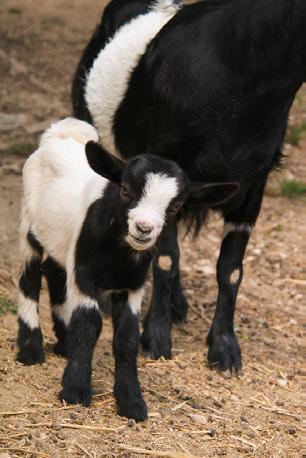




Bi-monthly publication of current organizational and agricultural issues in the Montana Grassroots newsletter.
Legislative bill updates by email and Zoom
Weekly e-news updates on important agricultural issues and upcoming events, educational opportunities, and workshops important to rural communities and agriculture
Group Dental & Vision Benefits with competitive rates
Insurance opportunities through
Farmers Union Insurance
Members receive a 5% discount on Farmers
Union Insurance Automobile Policy
Nationwide Pet Insurance
Discounts on our youth camps at MFU’s Arrowpeak Camp in the Highwood Mountains
Membership discounts on facility rental of Arrowpeak Lodge & Camp
MFU Foundation Grant Funding Cycles for Education based Agriculture projects
Farmers Union Enterprise Leadership (FUEL) Program
NFU Spring Advocacy Training
Beginning Farmer Institute
State Legislative Drive-In
Youth Advocacy and Cooperative Training
Statewide education forums
Producer’s Conference
Women’s Conference
School Visits and Day Camps
Youth Summer Camps at Arrowpeak
-Awarded more than $30,000 for ag-based education projects in 2022
Grants for FFA and 4-H clubs upon application
-Donated more than $100,000 to the FFA Foundation and FFA Projects in recent years; Donated more than $20,000 to Montana 4-H Clubs and Foundation in recent years.
Washington, DC Fly-ins
State Legislative Lobbying input
Access to National Farmers Union Legislative office in Washington DC
MFU awards scholarships to members for qualifying High School, College & NonTraditional Students
Producer members invited to MFU Annual State Convention to shape member policies and priorities

Access to local MFU Ambassador staff located all around the state to support you and answer your questions MFU-planned community gatherings, events in local communities all around the state
Meet with Farmers Union members in your community on the issues most important to you through Farmers Union locals and member events/gatherings.

Great Falls -Staybridge Suites (10% off); Holiday Inn ($94); Comfort Inn & Suites ($84+tax); Hotel Arvon (10% off).
Billings – Billings Hotel & Convention Center ($105)
Bozeman - Comfort Inn, 1370 N 7th Ave 15% off booked hotel room
Helena - Comfort Inn – ($114, *rate may be higher based on season)
Nationwide
LaQuinta Hotels - 10 % off their lowest rate
Budget Rentals - 20% off Motel 6 - 10% off Wyndham Hotels - 20% off
Travel Planning benefit: Exclusive travel benefits and deals on flights, hotels, car rentals, and group travel for events above and beyond the benefits listed in this section. Contact mfu@montanafarmersunion.com and ask about the Exclusive Travel Benefits.
Avis Car Rental discount: 25% off Enterprise Car Rental discount: 10-15% off
Sprint discounted Cell Service, Constant Contact discount, CSAware discount, ODP Business Solutions (B2B Office Depot and Office Max savings.)



Enjoy 15% off on in-store purchases only of Work or Western Boots, Work Apparel, Ranch Wear, Hats, Outerwear & Boot Care! Just let them know you are a Montana Farmers Union member at the register. This is at all Boot Barn retail locations, nationwide.
Cabela’s/Bass Pro Shops discount for members, 5% off on gift cards, 10 % off third party brands, and up to 20% off on Bass Pro Shop/Cabela’s branded clothing. Add an MFU Logo at the same time at no extra cost! The MFU Account # is 112-513-648 and place your order by calling 1-800-243-6626.
Johnny’s Select Seeds -5% off (contact mfu@montanafarmersunion.com for the code)


Receive $80 off of a single or family plan through EA+ (Emergency Assistance Plus)
For Access Codes and questions contact MFU’s State Office at 406-452-6406 or mfu@montanafarmersunion.com
Working Person’s Store -10% off work wear, footwear, and outerwear
Sow True Seed - 10% off Rosie’s Workwear for Women - 15% off Gempler’s -10% off WorkBoots.com - 15% discount
Drone Launch Academy - $50 discount Range Meat Academy – 10 % off Farm Commons Producer Membership (Farm Business Law Commons) – 30% off CoolBot (build your own walk-in cooler with this walk-in cooler controller) - $20 off your purchase



